Top Microcontroller Programming Tools and IDEs for Developers
Category: Embedded Systems
Unlock the Best Microcontroller Programming Tools and IDEs for Your Next Project
If you're a tech enthusiast, hobbyist, or developer diving into Raspberry Pi, microcontroller projects, or embedded systems, you know that choosing the right programming tools and IDEs is crucial. Whether you're coding in Python, C, or C++, the right environment can drastically improve your productivity and project outcomes. Perhaps you've searched for options that streamline debugging, support diverse microcontroller architectures, or integrate well with your existing workflow—but the sheer number of tools can be overwhelming.
This article cuts through the noise with a clear, structured guide to the best microcontroller programming tools and IDEs available today. We explore their key features, compatibility, ease of use, and support for embedded systems development so you can confidently pick the right fit for your skill level and project complexity. Unlike generic lists, this post focuses on practical insights tailored to Raspberry Pi and popular microcontroller platforms, helping you focus on what truly matters: efficient development and successful builds.
Read on to discover how to optimize your programming setup, save valuable development time, and take your embedded projects to the next level with the perfect combination of tools.
- Unlock the Best Microcontroller Programming Tools and IDEs for Your Next Project
- Overview of Microcontroller Programming: Understanding Development Requirements and the Role of Specialized Tools and IDEs
- Key Features to Look for in Microcontroller IDEs
- Popular Microcontroller Programming Tools
- Detailed Guide to Top IDEs for Microcontroller Programming
- Programming Languages Support: How IDEs and Tools Handle Python, C, and C++ in Microcontroller Development
- Debugging and Simulation Tools: Exploring In-Circuit Debuggers, Simulators, and Emulators for Effective Troubleshooting
- Cross-Platform Development and Portability: Tools and IDEs for Windows, macOS, and Linux
- Open Source vs Proprietary Tools: Comparing Benefits, Limitations, and Licenses for Your Microcontroller Projects
- Integration with Version Control and CI/CD Pipelines: How Modern Microcontroller Development Setups Incorporate Git, GitHub, and Automated Build/Testing Tools
- Tips for Choosing the Right Toolchain: Factors to Consider Before Deciding
Overview of Microcontroller Programming: Understanding Development Requirements and the Role of Specialized Tools and IDEs
Microcontroller programming is a specialized area within embedded systems development that requires an understanding of both hardware constraints and software capabilities. Unlike general-purpose computing, programming microcontrollers involves working with limited memory, processing power, and specific peripheral interfaces. This creates a unique set of development requirements where efficiency, real-time performance, and precise hardware control are critical.
To meet these challenges, developers rely on specialized programming tools and integrated development environments (IDEs) designed specifically for embedded applications. These tools facilitate essential tasks such as code compilation, debugging, flashing firmware onto microcontrollers, and real-time monitoring. They also provide features tailored to embedded systems, including register visualization, peripheral simulation, and hardware abstraction layers. Furthermore, IDEs often support multiple microcontroller architectures and languages like C, C++, and increasingly, Python, enabling developers to write optimized, maintainable code targeted for resource-constrained environments.
By leveraging dedicated microcontroller programming tools, developers can accelerate development cycles, reduce firmware bugs, and improve the reliability of their embedded projects. Whether working on a simple sensor node connected to a Raspberry Pi or a complex IoT device, understanding the role of these tools is fundamental to mastering embedded systems programming.

Image courtesy of Markus Spiske
Key Features to Look for in Microcontroller IDEs
Selecting the right microcontroller IDE is essential for efficient embedded systems development, especially when working with Raspberry Pi or popular microcontroller platforms. To maximize productivity and code reliability, you should prioritize IDEs that offer robust debugging capabilities, comprehensive compiler support, an intuitive user interface, seamless hardware integration, and effective real-time monitoring. These features collectively simplify complex development workflows and accelerate iteration cycles.
1. Debugging Capabilities
An IDE with advanced debugging tools helps you identify and fix bugs quickly by providing features such as breakpoints, step execution, watch variables, and memory inspection. Look for support for hardware debuggers (e.g., JTAG, SWD) that allow stepping through code directly on the microcontroller, which is invaluable for embedded projects with tight resource constraints.
2. Compiler Support
A versatile IDE should support a range of compilers compatible with different microcontroller architectures like ARM Cortex-M, AVR, or ESP32. Compatibility with popular compilers such as GCC, Clang, or vendor-specific toolchains enables flexibility in language choice (C, C++, or Python via transpilers) and optimization levels, crucial for efficient embedded firmware.
3. User Interface and Developer Experience
The IDE’s user interface impacts how quickly you can navigate your codebase, manage files, and configure projects. Features like code auto-completion, syntax highlighting, inline error detection, and customizable layouts significantly boost coding efficiency and reduce errors during development.
4. Hardware Integration
Effective integration with microcontroller hardware includes support for flashing firmware, configuring peripherals, and interfacing with external devices like sensors or communication modules. IDEs that allow easy access to programming/debugging hardware and provide peripheral registers visualization enable smoother hardware-software interaction.
5. Real-Time Monitoring and Analysis
Embedded systems often require real-time feedback to evaluate sensor data, communication protocols, or system performance. IDEs offering real-time variable monitoring, trace analysis, and serial output consoles improve insight into running code behavior, facilitating faster debugging and system optimization.
By focusing on these critical features, you can select a microcontroller programming environment that enhances your embedded development experience, leading to more reliable, maintainable, and scalable projects on platforms like the Raspberry Pi and beyond.
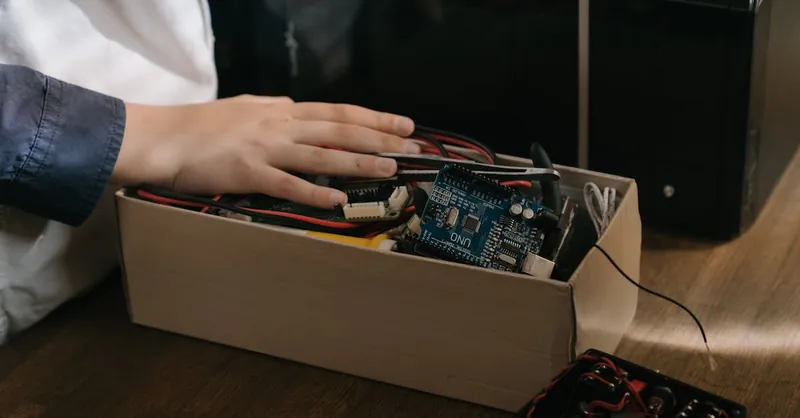
Image courtesy of cottonbro studio
Popular Microcontroller Programming Tools
Choosing the right programming tools and Integrated Development Environments (IDEs) can greatly influence the ease and success of your microcontroller projects. The embedded systems community relies heavily on a handful of robust tools that provide excellent support for diverse microcontroller families, intuitive interfaces, and advanced debugging capabilities. Here’s a look at some of the most popular microcontroller programming tools that align well with Raspberry Pi projects and embedded systems development using Python, C, and C++.
1. PlatformIO
PlatformIO is an open-source ecosystem designed for embedded development that supports a vast range of microcontrollers including ESP32, STM32, AVR, and many more. It integrates seamlessly with popular code editors like Visual Studio Code, turning them into full-fledged IDEs tailored for microcontroller programming. Key highlights include:
- Cross-platform compatibility, enabling development across Windows, macOS, and Linux.
- Built-in support for over 900 embedded boards and multiple frameworks.
- Advanced debugging, unit testing, and continuous integration features.
- Easy library management and project configuration files.
- Support for multi-language development such as C, C++, and Python via transpilers or MicroPython firmware.
PlatformIO’s flexibility makes it ideal for hobbyists and professionals who want streamlined workflow and broad device support without being tied to vendor-specific constraints.
2. MPLAB X IDE
Developed by Microchip Technology, MPLAB X IDE is a powerful environment tailored primarily for PIC microcontrollers and dsPIC digital signal controllers. It is well-suited if your project involves these microcontroller families, offering:
- Native integration with Microchip’s compilers and debugging tools.
- Sophisticated code editing and project management.
- Real-time hardware debugging via in-circuit debuggers like MPLAB ICD and REAL ICE.
- Peripheral and memory view for detailed hardware interaction.
- Extensive support for embedded C development, optimized for Microchip devices.
MPLAB X is a go-to choice for embedded developers focused on Microchip products, delivering a professional-grade environment optimized for complex embedded applications.
3. Atmel Studio
Atmel Studio, now part of Microchip as well, caters specifically to AVR and ARM microcontrollers. This IDE provides a rich, Microsoft Visual Studio-based environment tailored for embedded development, with features such as:
- Comprehensive debugging tools including simulators and on-chip debuggers.
- GCC-based compiler support for efficient C and C++ programming.
- Seamless integration with Atmel ICE and other debug tools.
- Intuitive code editing with auto-completion, syntax highlighting, and code refactoring.
- Extensive libraries and examples for faster development.
For developers working with Arduino-compatible AVR chips or ARM Cortex-M series microcontrollers, Atmel Studio offers a robust development experience with professional-level debugging and compiling features.
4. Segger Embedded Studio
Segger Embedded Studio is a highly regarded IDE designed for ARM Cortex-M microcontrollers but also supports other architectures. Known for its efficiency and user-friendly interface, it offers:
- High-performance compiler and linker optimized for embedded systems.
- Superior debugging tools with real-time analysis and visualization.
- Integrated RTOS awareness and trace capabilities.
- Excellent support for popular microcontroller platforms, including those used in Raspberry Pi add-ons.
- Free licensing options for non-commercial and educational use, making it accessible for hobbyists.
Segger Embedded Studio stands out for projects requiring extensive debugging and performance tuning, especially in resource-constrained embedded environments.
Choosing among these popular microcontroller programming tools depends largely on your target hardware, programming language preference, and desired workflow efficiency. Whether you prioritize broad device support with PlatformIO, vendor-optimized environments like MPLAB X and Atmel Studio, or advanced debugging with Segger Embedded Studio, understanding their unique strengths will help you create reliable, optimized embedded projects with ease.

Image courtesy of Thirdman
Detailed Guide to Top IDEs for Microcontroller Programming
When it comes to selecting the perfect IDE for your microcontroller projects, understanding the unique strengths and specific use cases of popular development environments can significantly improve your workflow and debugging efficiency. Below, we explore four top IDEs that are widely adopted in embedded systems development, especially suitable for Raspberry Pi interfacing and programming in Python, C, and C++.
1. Eclipse with Embedded Plugins
Eclipse is a robust, open-source IDE that, when combined with embedded plugins such as GNU MCU Eclipse or Eclipse Embedded CDT, transforms into a powerful development hub for microcontroller programming. Its strengths include:
- Customizability: Eclipse supports a vast range of toolchains and offers flexibility in managing complex projects for different microcontroller architectures, including ARM Cortex-M and AVR.
- Advanced Debugging: Embedded plugins integrate with hardware debuggers through GDB servers like OpenOCD, providing breakpoint management, step-through execution, and peripheral register views.
- Cross-platform Support: Available on Windows, macOS, and Linux, making it ideal for diverse development environments.
- Large Ecosystem: Access to numerous extensions for code analysis, version control (Git), and build systems (CMake) enhances productivity.
Eclipse is particularly effective for developers who require a highly configurable environment tailored for large embedded projects and those who appreciate an open-source, extensible platform.
2. Visual Studio Code with Embedded Extensions
Visual Studio Code (VS Code) has become a favorite in embedded development due to its lightweight design coupled with powerful extension capabilities. Extensions such as PlatformIO IDE, Cortex-Debug, and Arduino support enable seamless embedded programming features:
- Intuitive Interface: Clean UI with strong support for code navigation, IntelliSense (smart code completion), and error highlighting boosts development speed.
- Integrated Debugging: Using extensions, VS Code provides integrated debugger support compatible with JTAG/SWD hardware debuggers and simulators.
- Multi-language Support: Supports C, C++, and Python development for embedded projects, making it versatile.
- Extensive Ecosystem: Rich marketplace of extensions allows integration with build systems, version control, serial monitors, and real-time data visualization.
VS Code is ideal for developers who want a modern, lightweight IDE that adapts easily to various microcontroller projects and programming languages, especially within the Raspberry Pi ecosystem.
3. Arduino IDE
The Arduino IDE is synonymous with beginner-friendly microcontroller programming, especially for projects involving Arduino-compatible boards and simple embedded systems:
- Simplicity and Ease of Use: A clean and straightforward user interface makes it accessible for beginners and rapid prototyping.
- Extensive Board Support: Compatible with a wide range of Arduino and third-party boards, easing hardware integration.
- Built-in Libraries: Comes with numerous ready-to-use libraries for sensors, actuators, and communication protocols.
- Live Serial Monitoring: Easy-to-use serial console for real-time debugging and sensor data visualization.
While it lacks some advanced debugging features, Arduino IDE’s straightforward approach is perfect for beginners, educators, and rapid development of embedded projects where ease of setup and simplicity are top priorities.
4. Keil μVision IDE
Keil μVision is a professional-grade IDE tailored for ARM microcontroller development, widely used in industry and complex embedded systems projects:
- Comprehensive ARM Toolchain: Includes the highly optimized ARM Compiler, debugger, and simulation tools well-suited for resource-constrained environments.
- Powerful Debugging and Analysis: Features include cycle-accurate simulation, real-time trace, and RTOS awareness, invaluable for performance-critical projects.
- Integrated Middleware: Offers software packs with real-time operating systems (like RTX), USB stacks, and networking protocols, accelerating development.
- Extensive Device Database: Supports a vast array of ARM Cortex-M microcontrollers from different vendors, enabling easy project setup.
Keil μVision excels in scenarios requiring in-depth debugging, precise performance optimization, and professional embedded software development, making it a preferred choice for advanced users and commercial projects.
By leveraging the specific advantages of Eclipse, Visual Studio Code, Arduino IDE, or Keil μVision, you can tailor your development environment to your project's scale, target microcontroller, and your preferred programming language. Each IDE brings a unique blend of features, from user-friendly interfaces to advanced debugging and real-time analysis, ensuring you have the right tools to tackle any embedded systems challenge efficiently.
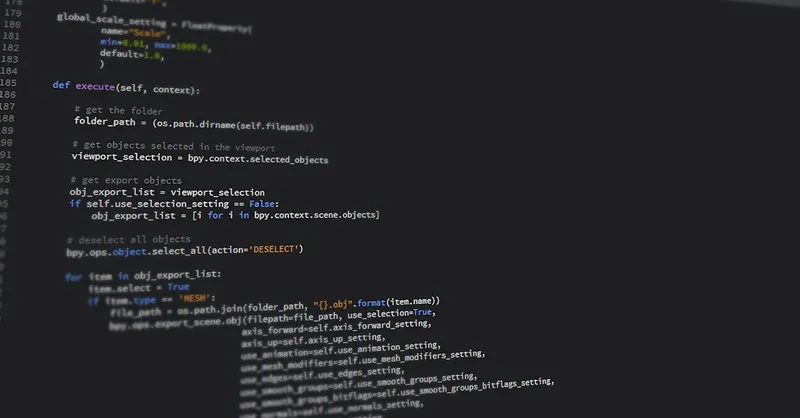
Image courtesy of Pixabay
Programming Languages Support: How IDEs and Tools Handle Python, C, and C++ in Microcontroller Development
When developing embedded applications for Raspberry Pi and microcontrollers, selecting an IDE or programming tool that robustly supports your chosen programming languages—Python, C, and C++—is paramount. Each language offers unique advantages: C and C++ provide efficient, low-level hardware control and high performance essential for resource-constrained environments, while Python excels in ease of use and rapid prototyping, especially on more capable microcontroller platforms or in conjunction with MicroPython and CircuitPython runtimes.
Native Language Support in Microcontroller IDEs
-
C and C++ are universally supported by most microcontroller IDEs such as Keil μVision, MPLAB X, Atmel Studio, and Segger Embedded Studio. These environments feature advanced compiler optimizations, real-time debugging, and hardware peripheral integration tailored for native C/C++ development, making them ideal for performance-critical and memory-sensitive embedded projects.
-
Python support is comparatively newer in embedded systems but growing rapidly, especially with platforms like MicroPython and CircuitPython designed for microcontrollers. IDEs like Visual Studio Code (via extensions such as PlatformIO) and specialized tools like the Thonny IDE offer integrated Python debugging, script uploading, and serial console features that facilitate Python-based embedded development.
Cross-Language Integration Tips for Embedded Systems
To harness the strengths of each language and enable versatile development workflows, many modern microcontroller IDEs and toolchains allow cross-language integration, combining Python's ease of scripting with C/C++'s efficiency:
-
Use Python for High-Level Logic and Prototyping: On Raspberry Pi or microcontrollers running MicroPython, write control algorithms and test device interaction using Python for quicker iteration cycles.
-
Leverage C/C++ for Performance-Critical Modules: Develop timing-sensitive or hardware-near components such as interrupt handlers, sensor drivers, or communication stacks in C/C++, then expose interfaces callable from Python scripts.
-
Employ Binding Tools and Wrappers: Use tools like Cython or generate Python bindings to connect Python code with C libraries, enabling seamless calls between languages within the same project for optimized execution.
-
Manage Firmware Builds with Multilanguage Support: IDEs like PlatformIO and Visual Studio Code facilitate building projects containing both Python scripts (for MicroPython firmware) and C/C++ modules, streamlining deployment workflows.
By understanding the language capabilities and integration options of your chosen microcontroller IDE or programming tool, you can create powerful embedded applications that leverage Python’s rapid development with C/C++’s performance and hardware control. Optimizing your development environment to support this mixed-language approach will enhance flexibility, code reuse, and overall project success in the dynamic landscape of embedded systems.
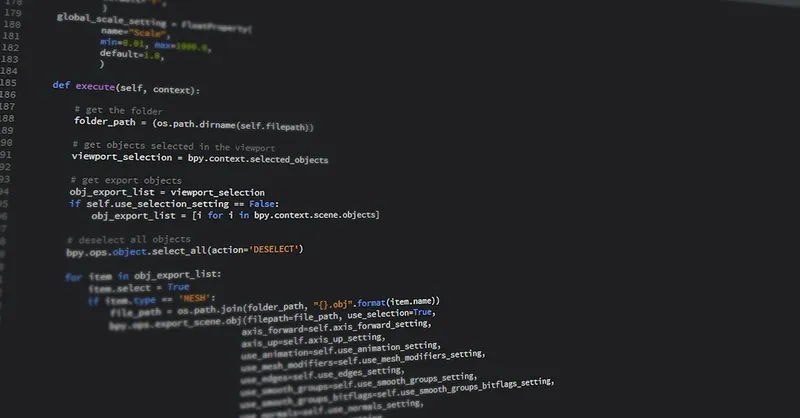
Image courtesy of Pixabay
Debugging and Simulation Tools: Exploring In-Circuit Debuggers, Simulators, and Emulators for Effective Troubleshooting
Effective debugging is a cornerstone of successful microcontroller and embedded systems development. Given the complexity and resource constraints of microcontrollers, leveraging dedicated debugging and simulation tools integrated within your chosen IDE can massively streamline troubleshooting, optimize performance, and minimize costly firmware bugs. These tools provide real-time insight into code execution, peripheral states, and hardware behavior, ensuring your embedded application runs reliably before deploying to production.
In-Circuit Debuggers (ICDs)
In-circuit debuggers connect directly to the microcontroller hardware via interfaces such as JTAG or Serial Wire Debug (SWD), enabling developers to halt program execution, inspect registers, modify memory contents, and step through code line-by-line on the actual device. This hardware-level debugging is invaluable for embedded projects because it:
- Provides real-time visibility into how your firmware interacts with peripherals like GPIO, ADC, Timers, or communication interfaces.
- Helps identify runtime issues such as incorrect register configurations, timing errors, and unexpected interrupts.
- Supports breakpoints, watch variables, and call stack analysis directly on the microcontroller, which is indispensable for diagnosing tough bugs that simulators may miss.
Popular in-circuit debuggers like ST-Link for STM32, J-Link by Segger, or Atmel-ICE blend seamlessly with IDEs such as Keil μVision, PlatformIO, and MPLAB X, offering streamlined workflows for flashing and debugging embedded firmware.
Simulators and Emulators
While in-circuit debugging works on physical hardware, simulators and emulators offer virtual environments to test and debug firmware without the need for an actual microcontroller board.
- Simulators mimic the microcontroller’s CPU and peripherals entirely in software within the IDE, allowing you to execute code, inspect memory, and check peripheral registers. This is ideal for early-stage development, teaching, or when hardware is unavailable, but certain low-level hardware states may not be fully accurately reproduced.
- Emulators provide a higher fidelity testing environment, often incorporating hardware peripherals and timing models to closely replicate the microcontroller’s behavior. Although less common due to complexity and cost, emulators can catch timing-related bugs and signal-level issues.
Many embedded IDEs like Atmel Studio, Keil μVision, and Eclipse Embedded CDT include integrated simulation capabilities, which enhance development speed by enabling pre-hardware validation and incremental testing.
Integration with IDEs for Seamless Debugging
Modern microcontroller IDEs emphasize the tight integration of these debugging and simulation tools to provide a smooth and efficient troubleshooting experience. Key benefits include:
- Unified interfaces for setting breakpoints, variable watches, and memory inspection.
- Automatic detection and configuration of debugging hardware.
- Support for real-time trace and profiling to analyze system performance.
- Visualization of peripheral registers and pin states alongside source code.
- Logging and serial console windows for detailed runtime feedback.
By choosing microcontroller programming environments with robust in-circuit debugging and simulation features, such as Visual Studio Code with PlatformIO, Eclipse Embedded CDT, and vendor-specific IDEs like MPLAB X or Atmel Studio, developers can isolate bugs faster, reduce development cycles, and ultimately deliver more dependable embedded solutions. Investing time in mastering these debugging and simulation tools is vital for elevating your Raspberry Pi and microcontroller project success.
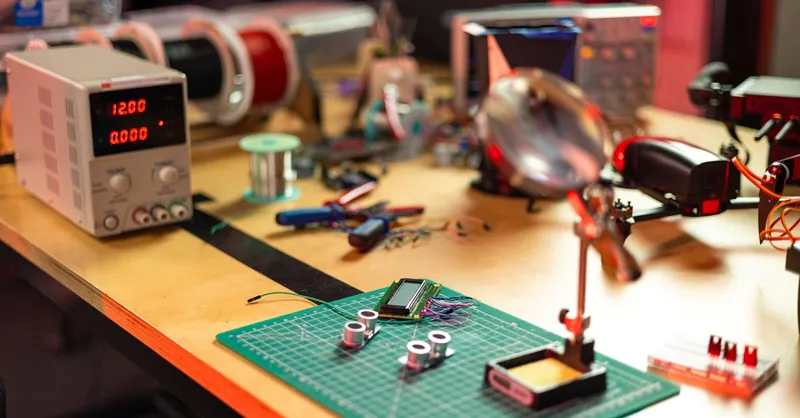
Image courtesy of ThisIsEngineering
Cross-Platform Development and Portability: Tools and IDEs for Windows, macOS, and Linux
One of the most important considerations for Raspberry Pi enthusiasts and embedded developers is cross-platform compatibility. Many microcontroller programming tools and IDEs offer seamless support across Windows, macOS, and Linux, enabling you to switch effortlessly between operating systems without disrupting your workflow. This flexibility is especially valuable for Raspberry Pi developers who often work in Linux environments but may also use Windows or macOS for certain tasks like code editing, project management, or debugging.
Benefits of Cross-Platform Development for Raspberry Pi Users
- Consistent Development Experience: Cross-platform IDEs ensure that your projects, code, and configuration files are portable, allowing teams or individual developers to collaborate effectively across different operating systems without compatibility issues.
- Simplified Toolchain Management: A unified toolchain across platforms reduces the overhead of setting up different compilers, debuggers, and flashing utilities on each OS.
- Broader Hardware Support: Many tools supporting cross-platform operations also accommodate diverse microcontroller architectures and Raspberry Pi models, making them versatile for mixed-hardware projects.
- Access to Native OS Features: Developers can leverage the strengths of each OS (e.g., Linux’s command-line tools or Windows’ GUI utilities) within a consistent programming environment.
Recommended Cross-Platform Tools and IDEs
- PlatformIO: Renowned for its true cross-platform nature, PlatformIO runs as an extension in Visual Studio Code, Eclipse, or Atom across all major OSes. It supports over 900 embedded boards, including Raspberry Pi Pico, and integrates build systems, unit testing, and debugging in a portable way.
- Visual Studio Code: Available natively on Windows, macOS, and Linux, with a rich extension ecosystem tailored for embedded development, making it a go-to choice for developers requiring flexibility and modern IDE features.
- Eclipse with Embedded Plugins: This open-source IDE works flawlessly across operating systems and supports multiple microcontroller toolchains, providing a consistent interface for embedded development.
- Arduino IDE: The Arduino ecosystem prides itself on cross-platform availability, ensuring that sketches, libraries, and board definitions work uniformly across systems.
By adopting cross-platform development tools, Raspberry Pi project developers can optimize productivity, maintain uniformity in codebases, and easily transition between different development environments, ultimately accelerating embedded systems programming regardless of the operating system in use. This portability is a crucial factor to consider when choosing your microcontroller programming environment to future-proof your workflow.

Image courtesy of Markus Spiske
Open Source vs Proprietary Tools: Comparing Benefits, Limitations, and Licenses for Your Microcontroller Projects
When selecting microcontroller programming tools and IDEs, one of the fundamental choices revolves around using open source versus proprietary software. Understanding their distinct advantages, limitations, and licensing models is crucial to making an informed decision that aligns with your project goals, budget, and long-term maintenance needs.
Benefits of Open Source Microcontroller Tools
Open source IDEs and tools, such as PlatformIO, Eclipse Embedded CDT, and many Arduino-related environments, offer several key advantages:
- Cost-Effectiveness: Most open source tools are free to use, which is ideal for hobbyists, educators, or startups with limited budgets.
- Transparency and Customizability: Because their source code is publicly available, developers can inspect, modify, and extend the software to tailor features or fix bugs—essential for cutting-edge or experimental embedded projects.
- Community Support and Collaboration: Vibrant developer communities contribute plugins, libraries, and troubleshooting advice, accelerating innovation and knowledge sharing.
- Cross-Platform Compatibility: Open source tools typically support Windows, macOS, and Linux, enhancing portability and team collaboration across diverse environments.
- Flexible Licensing: Licenses like MIT, GPL, or Apache ensure users retain freedom to use, distribute, and sometimes modify the tools without onerous restrictions.
Limitations of Open Source Tools
- Fragmented Support: While communities are helpful, official technical support is often limited or slower compared to paid solutions.
- Learning Curve: Some open source IDEs can be complex to configure, demanding more setup and troubleshooting time for beginners.
- Feature Gaps: Occasionally, open source tools may lack advanced debugging features or vendor-specific optimizations found in proprietary environments.
Advantages of Proprietary Microcontroller IDEs and Tools
Commercial software such as Keil µVision, MPLAB X IDE, and Segger Embedded Studio offer professional-grade features, making them preferred in industry and mission-critical applications:
- Robust Technical Support: Access to dedicated vendor support teams, product updates, and comprehensive documentation.
- Optimized Performance: Advanced compiler optimizations, real-time trace, RTOS integration, and highly efficient debugging tools tuned for specific hardware.
- Integrated Middleware and Libraries: Many proprietary IDEs include certified software stacks, communication protocols, and middleware for faster development.
- User-Friendly Interfaces: Streamlined workflows with polished GUIs, making advanced embedded development more accessible.
- Comprehensive Certification: Some commercial tools provide certifications for safety-critical industries (e.g., automotive, medical), essential for compliance.
Drawbacks of Proprietary Tools
- Cost and Licensing Restrictions: Licensing fees can be expensive, especially for multiple users or commercial deployment, and often come with usage constraints.
- Vendor Lock-In: Proprietary toolchains may restrict flexibility by supporting only specific microcontroller brands or architectures.
- Less Open Customization: Source code access is typically unavailable, limiting deep customization or community-driven enhancements.
Choosing the Right Model for Your Projects
To decide between open source and proprietary microcontroller programming tools, consider the following criteria:
| Criteria | Open Source Tools | Proprietary Tools |
|---|---|---|
| Budget | Ideal for low or zero budget projects | Suitable if budget allows for licensing |
| Project Complexity | Great for flexible, experimental projects | Best for complex or mission-critical apps |
| Hardware Compatibility | Broad, community-driven support | Optimized for specific vendors/hardware |
| Support & Documentation | Community forums and online resources | Official support with SLA and updates |
| Customization Needs | High customization possible | Limited to vendor features |
| Platform Requirements | Cross-platform by default | Usually cross-platform but depends on vendor |
Ultimately, hobbyists, educators, and open innovation projects will benefit from the flexibility and cost savings of open source tools, while professional development teams and commercial applications might prioritize the reliability and support provided by proprietary IDEs. Many embedded developers adopt a hybrid approach—starting projects with open source environments and migrating to commercial tools as system complexity or certification needs grow.
Understanding these trade-offs empowers you to select microcontroller programming tools that not only fit your current project but also scale efficiently as your embedded system development expertise evolves.

Image courtesy of Markus Spiske
Integration with Version Control and CI/CD Pipelines: How Modern Microcontroller Development Setups Incorporate Git, GitHub, and Automated Build/Testing Tools
In today's embedded systems development landscape, integrating version control systems and CI/CD (Continuous Integration/Continuous Deployment) pipelines is no longer optional but essential for maintaining code quality, collaboration efficiency, and project scalability. Modern microcontroller programming tools and IDEs increasingly support seamless integration with Git, GitHub, and other version control platforms, allowing developers to track changes, manage branches, and collaborate effectively on complex embedded projects involving Raspberry Pi and a wide range of microcontroller architectures.
Why Version Control Matters in Embedded Development
Version control with Git provides:
- Robust Change Tracking – Every modification in your firmware source code, configuration files, and scripts is recorded, enabling easy rollback and comparison during debugging or feature development.
- Collaboration Made Easy – Multiple developers can work concurrently without conflicts, using branching and merging strategies to evolve codebases systematically.
- Backup and History – Remote repositories hosted on platforms like GitHub, GitLab, or Bitbucket secure your project history against data loss, facilitating distributed and remote work.
- Traceability for Compliance – In mission-critical embedded systems, version control helps maintain audit trails essential for safety certifications and quality assurance.
Automating Builds and Tests Through CI/CD for Embedded Projects
Continuous Integration and Continuous Deployment pipelines automate the compilation, testing, and sometimes the deployment of microcontroller firmware, delivering multiple benefits:
-
Automated Build Verification: Each code commit triggers an automated build process using toolchains supported by IDEs like PlatformIO or Makefiles integrated with Visual Studio Code or Eclipse. This ensures new changes don’t break the build and maintain firmware integrity.
-
Unit Testing and Static Analysis: Incorporating automated unit tests using frameworks such as Unity or Ceedling, as well as static code analysis tools, helps catch bugs early and enforce coding standards in C, C++, and Python modules.
-
Firmware Deployment Automation: Some CI/CD setups enable automated flashing of firmware directly onto hardware connected to build servers or via device farms, increasing testing throughput and accelerating release cycles.
-
Continuous Feedback: Developers receive immediate notifications on build failures, test results, or code quality issues through dashboards or messaging platforms, fostering a proactive development culture.
Toolchain and Platform Support for Version Control and CI/CD
- PlatformIO offers native integration with Git and supports CI services like GitHub Actions and Travis CI, simplifying continuous build and test pipelines for embedded projects.
- Visual Studio Code extensions facilitate Git workflows directly from the IDE, while also allowing integration with external CI/CD tools.
- Vendor-specific IDEs such as MPLAB X and Atmel Studio can be scripted or paired with external tools to participate in automated build pipelines.
- Cloud-based services like GitHub Actions, GitLab CI, and CircleCI provide embedded SDK compatibility, enabling cloud-hosted builds and testing environments that reduce local resource constraints.
By adopting integrated version control and CI/CD workflows, embedded systems developers achieve higher code quality, build reliability, and collaboration efficiency, which are critical for the success of Raspberry Pi interfacing projects and resource-constrained microcontroller applications alike. This modern approach transforms traditional embedded development into a scalable, maintainable process aligned with industry best practices and agile methodologies.
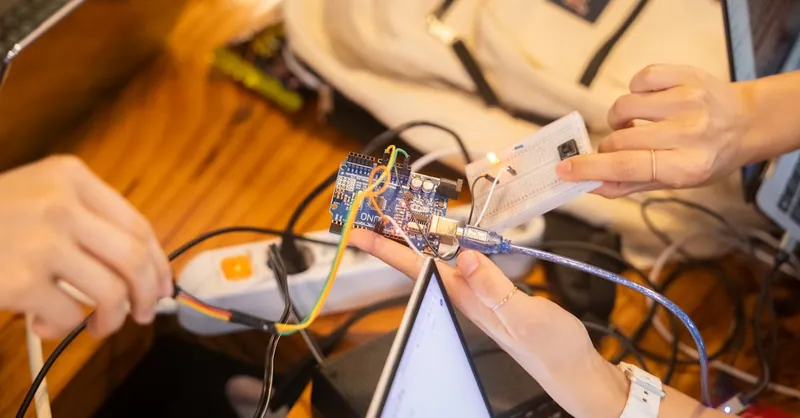
Image courtesy of Youn Seung Jin
Tips for Choosing the Right Toolchain: Factors to Consider Before Deciding
Selecting the ideal microcontroller programming toolchain and IDE for your Raspberry Pi or embedded system project requires careful evaluation of several important factors. The right toolchain not only ensures smooth hardware compatibility but also supports an efficient development process, ultimately accelerating your project timeline and improving code quality.
Key Factors to Consider
-
Hardware Compatibility
Ensure the toolchain supports your target microcontroller architectures, such as ARM Cortex-M, AVR, or ESP32, as well as peripherals and debugging interfaces like JTAG or SWD. Compatibility with Raspberry Pi add-ons or specific development boards (e.g., Raspberry Pi Pico) is crucial for seamless code flashing and hardware integration. -
Community and Vendor Support
Strong community backing and active vendor support can greatly influence your development experience. Robust forums, extensive documentation, timely updates, and troubleshooting resources help resolve challenges quickly, especially for complex embedded projects or when using less common microcontrollers. -
Cost and Licensing
Evaluate whether an open source or proprietary toolchain best fits your budget and project needs. Open source options like PlatformIO and Eclipse often offer free access with community-based support, while commercial IDEs such as Keil μVision provide advanced features backed by professional support at a licensing cost. -
Learning Curve and Usability
Choose a toolchain that matches your proficiency and project complexity. Beginner-friendly IDEs like Arduino IDE offer simplicity for rapid prototyping, whereas professional-grade environments such as MPLAB X or Segger Embedded Studio might demand more setup but provide powerful debugging and analysis capabilities for advanced users. -
Language and Framework Support
Confirm the toolchain supports your preferred programming languages (Python, C, C++) and frameworks (e.g., MicroPython, RTOS). Multi-language and multilayer support enhances flexibility and future-proofs your development workflow as project requirements evolve. -
Integration with Development Workflow
Modern embedded development benefits from integration with version control systems (Git), automated build tools, debugging hardware, and continuous integration pipelines. A toolchain that seamlessly fits into your existing workflow reduces overhead and promotes efficient team collaboration.
By thoughtfully weighing these factors, you can strategically select a microcontroller programming environment tailored for your embedded project’s hardware constraints, development skills, and long-term scalability. This ensures you capitalize on the best features and support available, maximizing productivity and the likelihood of project success on Raspberry Pi and other microcontroller platforms.

Image courtesy of Markus Spiske
